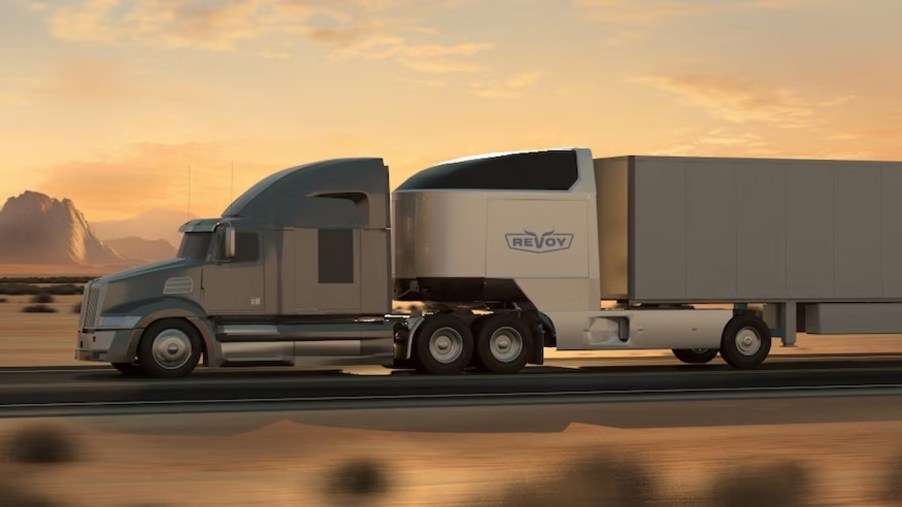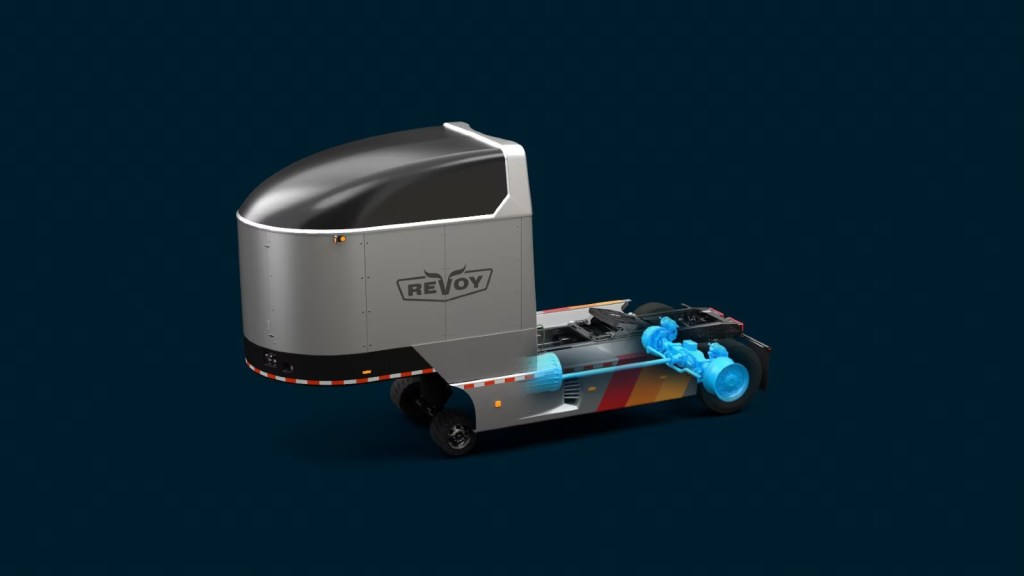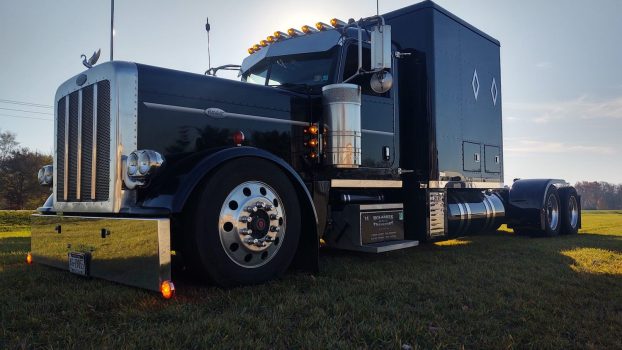
Can Semi-Trucks Become Plug-In Hybrids? Here’s 1 Way
Plug-in hybrid vehicles provide an electric driving range separate from the gas driving range. Most semi-trucks operate using diesel fuel, and diesels haven’t yet hit the road as PHEVs. Still, Revoy, a trucking startup, has an idea that could turn a traditional semi into a plug-in hybrid vehicle.

What’s Revoy’s plan to improve semi-truck driving range?
The idea of creating electric semi-trucks isn’t new; many companies have studied the idea and worked to create electric semis. Tesla has some EV semis on the road, and a few other companies provide electric big rigs for regional and short-haul driving. Unfortunately, no company has cracked the code for long-haul trucking to transition semis from diesel to electricity.
Motortrend reports that Revoy has a system to extend the driving range of a traditional semi-truck. Instead of replacing the diesel-powered tractor with an electric version, Revoy offers a swappable modular electric battery and powertrain module that can be placed between the semi-tractor and the trailer. This module would extend the driving range and improve the efficiency of the semi-truck, turning the semi into a plug-in hybrid.
How much added range could the Revoy system add?
By hooking up the Revoy module to the fifth-wheel plate, the tractor-trailer is a tractor-tractor-trailer. The fully-electric Revoy module drives a single axle and has a 525-kWh battery, adding up to 250 miles of driving range to the system. This added range would make a semi-truck using the Revoy module the longest-range plug-in hybrid vehicle on the road. This could translate to fuel savings of 5-10 percent for fleet operators.
Because Revoy is a startup and this program is mostly experimental, truckers using the Revoy module wouldn’t need to recharge the system. Instead, these drivers could pull into a hub along their route, and Revoy will swap out the module with a fully-charged version.
What happens when the Revoy module batteries are empty?
When the batteries die in the Revoy module, the diesel tractor starts up and pulls the load to its destination. This is where the challenges begin. The Revoy module could cut deep into the maximum allowable payload. Federal law limits a semi-truck to 80,000 pounds. This could require trucking companies to make more long-haul runs than without the Revoy system. If this happens, the fuel savings are essentially nullified.
Currently, Revoy has a swapping station in Dallas and intends to add more in Texas, Arkansas, California, and Oregon. While an interesting way to turn a diesel-powered semi-truck into a PHEV, this program is in its infancy and hasn’t been fully tested yet.






